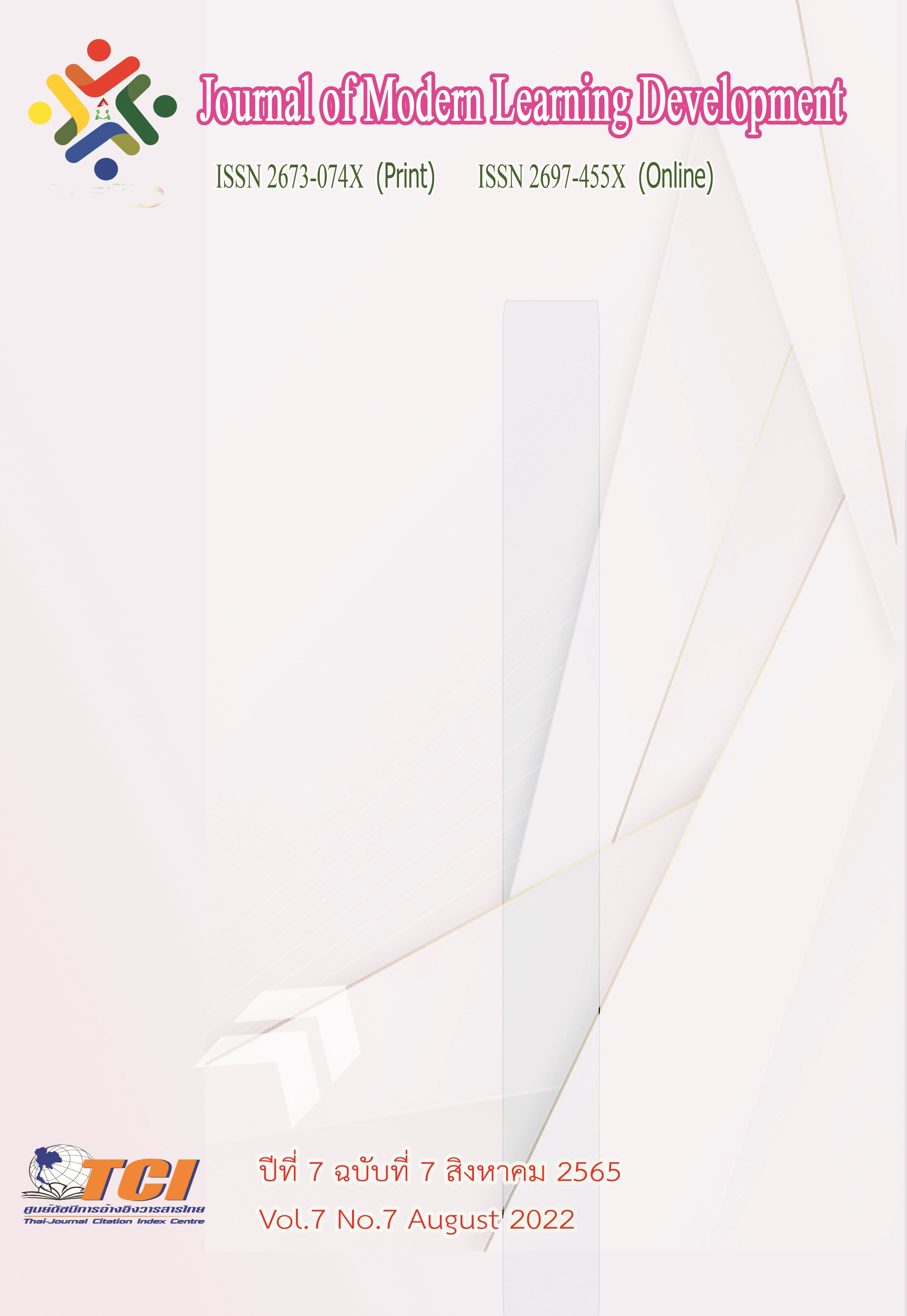Analysis of Buying Behavior and Brand Loyalty of Community Enterprise, Pathum Thani Province
Main Article Content
Abstract
Behavior and loyalty can determine business practices that match consumer groups. Moreover, it can also create attractiveness. This research is quantitative research. Data were collected from 324 community enterprise entrepreneurs in Pathum Thani Province by collecting specific samples in order of names. The research instrument used a questionnaire divided into 4 parts, using mean analysis and factor analysis. The objective of this study was to study the components of purchasing behavior and loyalty of community enterprises in Pathum Thani province.
The results showed that the exploratory component analysis revealed that the repurchase decision (Bl2) had the highest component weight at 0.886. Consistency measurements are appropriate harmonious. (Chi-square=2.74, df=0, P-value =0.000, RMSEA=0.000)
Knowledge from research and development of brands and packaging to be able to compete with other operators, generating recognition and repeat purchases. By wanting a unique product Improve taste and quality. Consistent quality control of taste and quality can enable consumers to remember a product and purchase it repeatedly. And develop online marketing channels. Access to social media and online marketing channels can help increase sales. But must provide content that is suitable for consumers.
Entrepreneurial feedback promotes the production of unique products, creates recognition, creates a unique brand and packaging that is easy to remember. Collaborate to brainstorm to create different products in each location. And connect to online marketing channels and open new markets.
Article Details
References
กฤตชน วงศ์รัตน์. (2563). อิทธิพลของส่วนประสมการตลาดบริการและการรับรู้ภาพลักษณ์องค์กรที่ส่งผลต่อความจงรักภักดีของลูกค้าที่มาใช้บริการรีสอร์ทและโฮมสเตย์จังหวัดเพชรบุรี. วารสารวิจัยราชภัฏเชียงใหม่. 21 (3), 209-227.
สมเกียรติ สุทธินรากร และคณะ. (2562). การสร้างสรรค์มูลค่าของผลิตภัณฑ์และนวัตกรรมการบริหารจัดการของวิสาหกิจชุมชน. วารสารวิทยาลัยดุสิตธานี. 13 (1), 270-283.
ชุติมา นิ่มนวล. (2563). ปัจจัยที่มีผลต่อพฤติกรรมการเลือกซื้อผลิตภัณฑ์ OTOP กรณีศึกษา: ผลิตภัณฑ์ OTOP จังหวัดพระนครศรีอยุธยา. วารสารวิทยาการจัดการปริทัศน์. 22 (1), 27-34.
บุญสม ลีชยากิตติกร. (2558). นวัตกรรมการตลาดสำหรับผลิตภัณฑ์สมุนไพร. ออนไลน์. สืบค้นเมื่อ 29 กันยายน 2564. แหล่งที่มา: http://ethesisarchive.library.tu.ac.th/thesis/2015/ TU_2015_ 5723030044 _3423_2120.pdf
ระบบสารสนเทศวิสาหกิจชุมชน. (2564). ข้อมูลวิสาหกิจชุมชน. ออนไลน์. สืบค้นเมื่อ 3 ตุลาคม 2564. แหล่งที่มา: http://smce.doae.go.th/smce1/report/report_tvc2_list.php
วิชิต ธาตุเพ็ชร. (2563). วิสาหกิจชุมชน. ออนไลน์. สืบค้นเมื่อ 25 มกราคม 2563. แหล่งที่มา: https://sites.google.com/site/kriengten /wisahkic-chumchn
อรอุมา นาทสีทา และคณะ. (2563). พฤติกรรมผู้บริโภคและสถานการณ์ตลาดของวิสาหกิจชุมชน จังหวัดนครนายก. วารสารวิทยาลัยดุสิตธานี. 14 (3), 310-327.
Diamontopoulos, A., & Siguaw, A. D. (2000). Introduction LISREL: A guide for the uninitiated. London: Sage.
Gunday, Gurhan. et., al. (2011). Effect of Innovation Types on Firm Performance. International Journal Production Economics. 133, 662-676.
Hair, J. F., Black, W. C., Babin, B. J., & Anderson, R. E., (2010). Multivariate data analysis: A global perspectives. Upper, Saddle River, NJ: Pearson Education, International.
Ngansathil, Wichitra. (2001). Market Orientation and Business Performance: Empirical Evidence from Thailand. Ph.D. Dissertation, The University of Merbourne.
Nguyen, Hong T. (2000). The Determinants and Decision Making Process of Export Marketing Activities in Small and Medium Sized Manufacturing Firms in Germany. DBA. Dissertation, Nova Southern University.
Nuryakin, et al. (2018). Mediating effect of value creation in the relationship between relational capabilities on business performance. Contaduría y Administración, 63 (1), 1-21.


